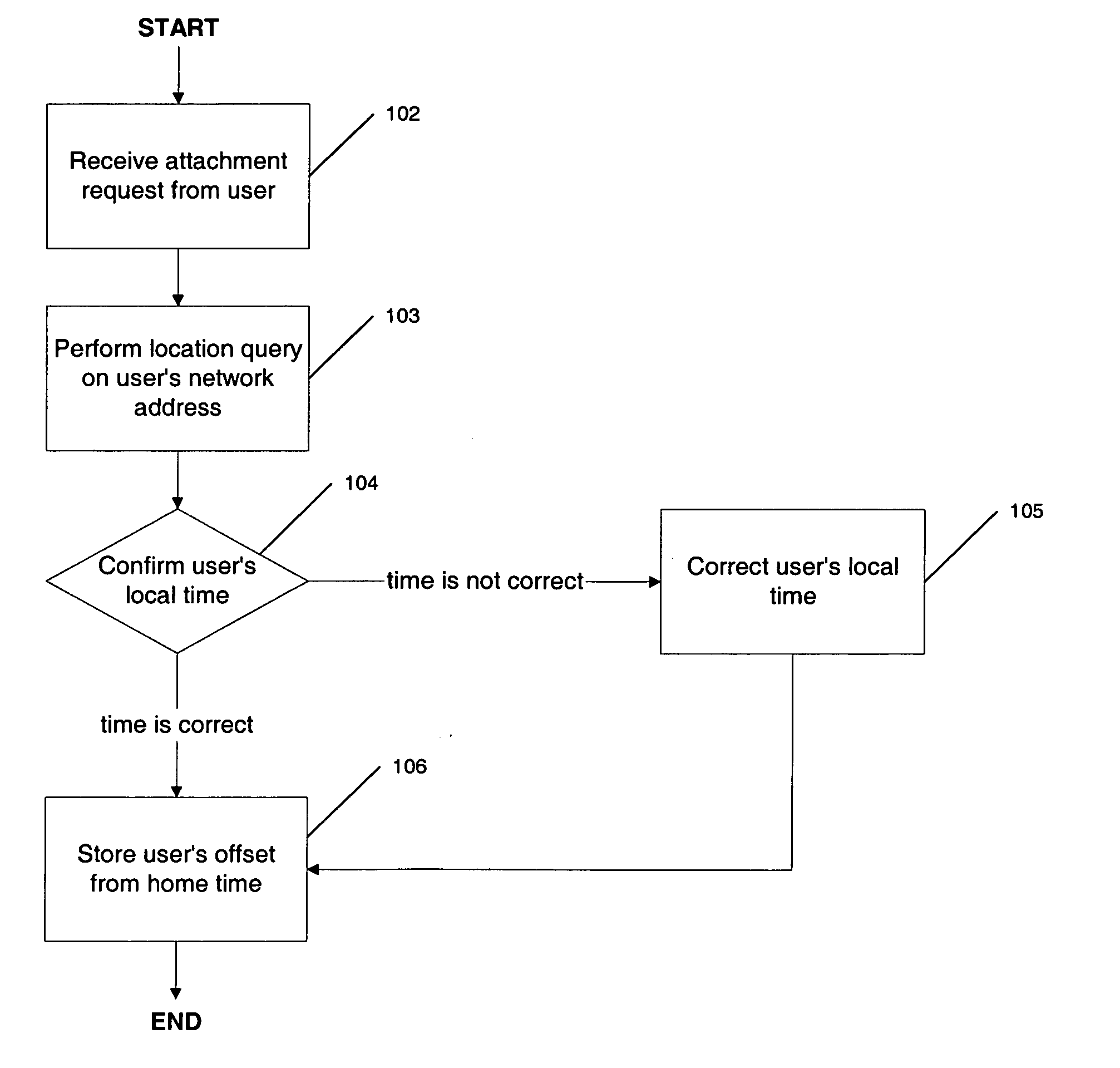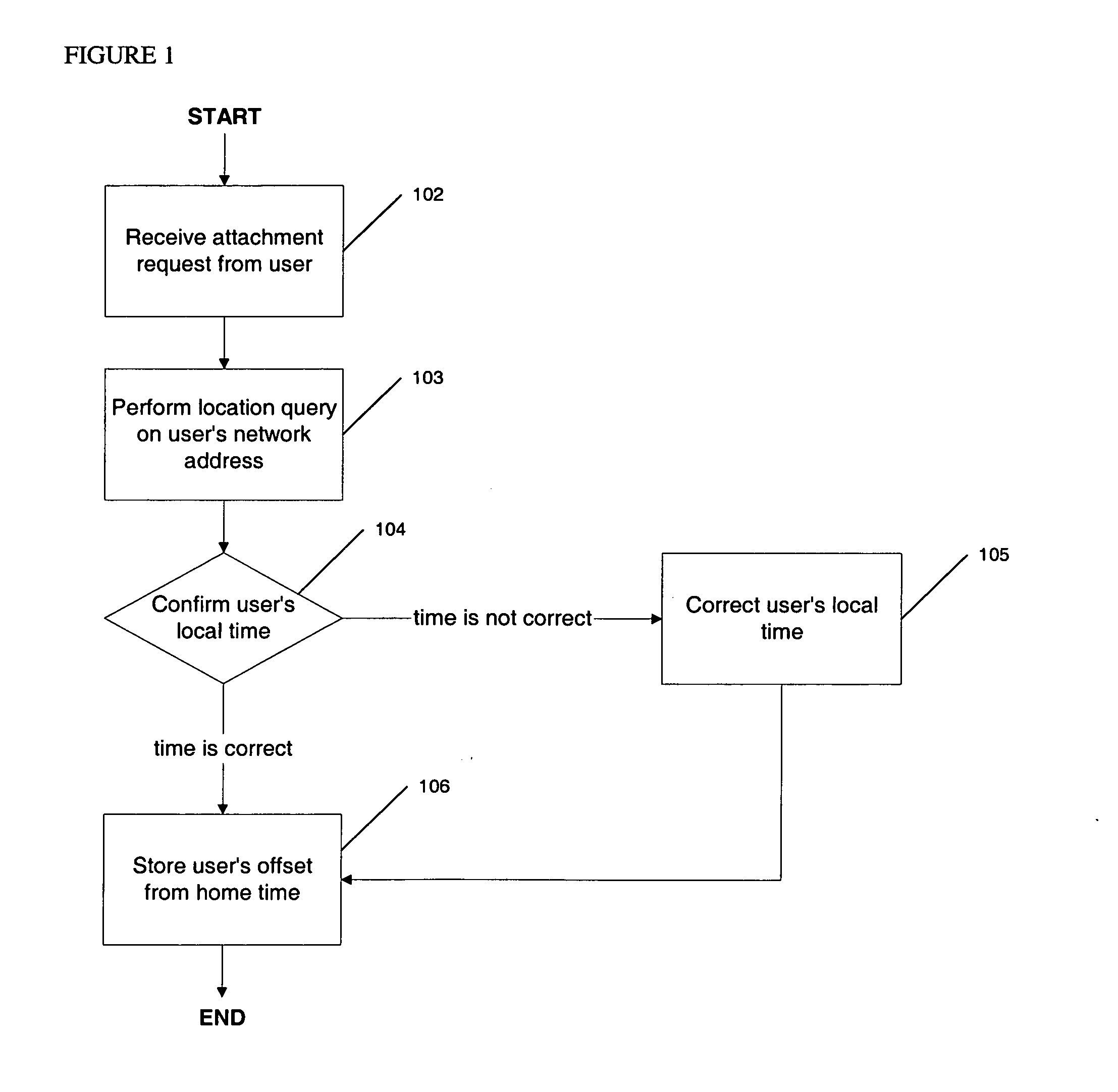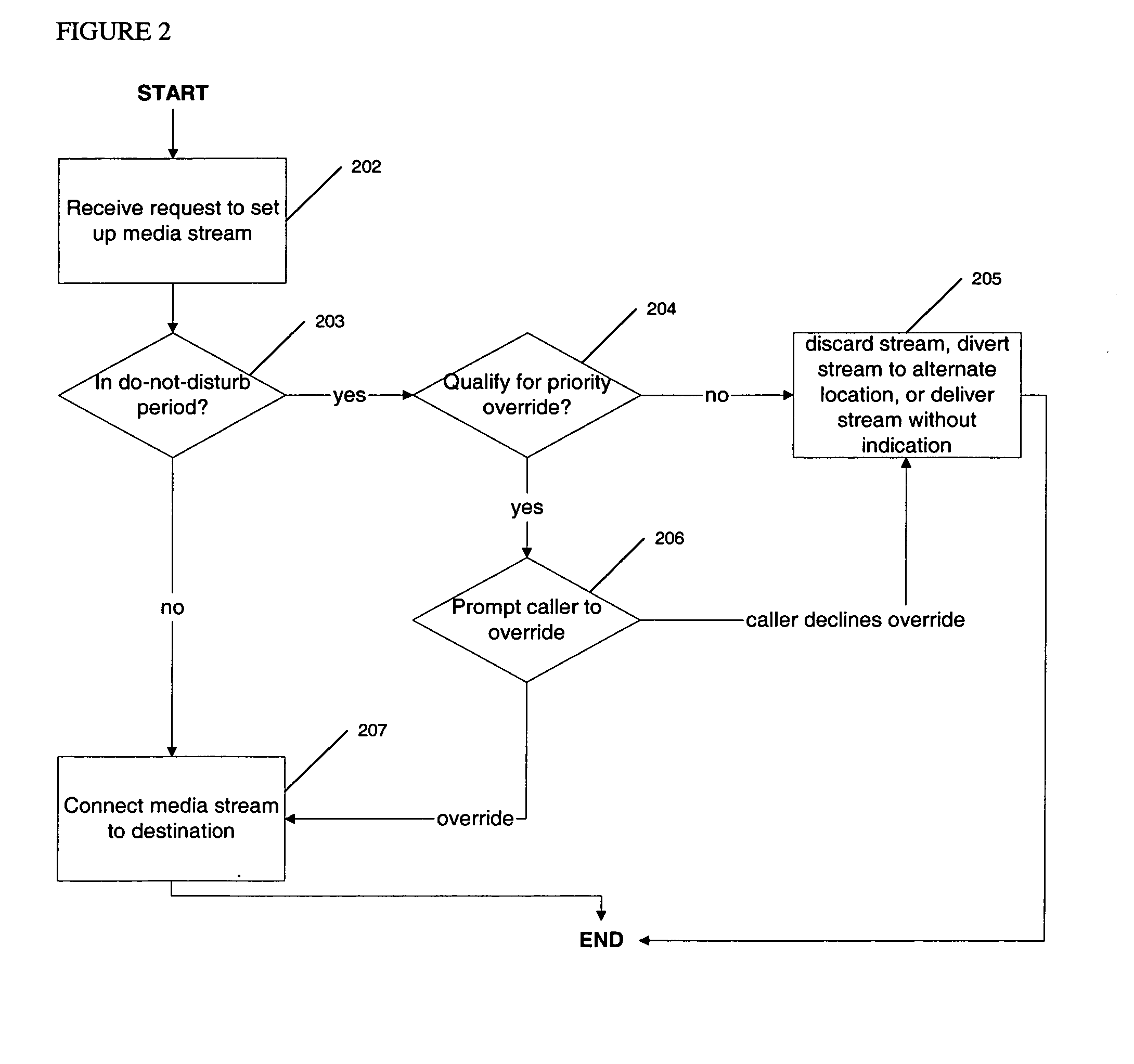System and method for selective delivery of media streams
a media stream and selective processing technology, applied in the field of network systems, can solve the problems of many data networks lacking such rigid geographical assignments
- Summary
- Abstract
- Description
- Claims
- Application Information
AI Technical Summary
Benefits of technology
Problems solved by technology
Method used
Image
Examples
Embodiment Construction
[0025]In one embodiment of the invention, shown in FIG. 3, the traveler connects to the Internet 302 at a remote location 310. For illustrative purposes, the remote location 310 is labeled “Chicago,” with a time of 2 PM. FIG. 3 shows the user connecting a telephone 312 to an analog telephone adapter (ATA) 313. Many ATAs use the Session Initiation Protocol (SIP) to register with a media stream broker that is part of a telephone system, such as a PBX 323. Other connection types are possible instead of the telephone 312 and ATA 313 combination, such as a telephone incorporating the SIP functions, or a “soft phone” program executing on a host operating system on a computer.
[0026]Many ATAs further have the ability to configure a plurality of “ring cadences” that describe the telephone ring tone in terms of the pitch, duration, and spacing of the ring emitted by a telephone. In some configurations, it is possible to configure a ring cadence that is silent. Other client devices are possibl...
PUM
 Login to View More
Login to View More Abstract
Description
Claims
Application Information
 Login to View More
Login to View More - R&D
- Intellectual Property
- Life Sciences
- Materials
- Tech Scout
- Unparalleled Data Quality
- Higher Quality Content
- 60% Fewer Hallucinations
Browse by: Latest US Patents, China's latest patents, Technical Efficacy Thesaurus, Application Domain, Technology Topic, Popular Technical Reports.
© 2025 PatSnap. All rights reserved.Legal|Privacy policy|Modern Slavery Act Transparency Statement|Sitemap|About US| Contact US: help@patsnap.com



